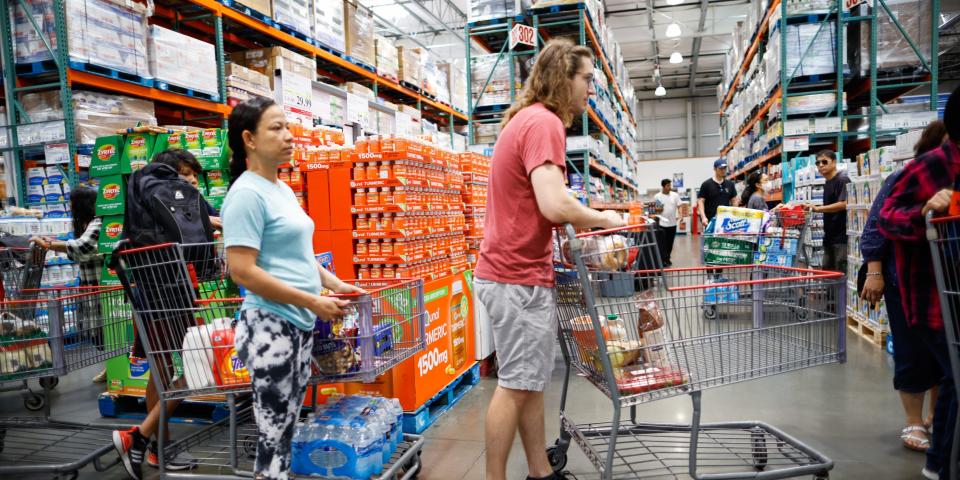Slowing consumer spending could be a warning for the US economy.
Retail spending dipped 1.3% over the last three months, per Census data.
America’s stimulus-fueled shopping spree looks just about over — and lower spending could be a signal that a consumer-led downturn is on the horizon, economic experts say.
Consumers are finally starting to rein in their spending habits, which could weigh on the economy after a long period of robust spending has propped up economic growth over the past few years. Retail spending ticked 0.1% higher in May, but sales volume has dropped 1.3% year-over-year over the last three months, US Census data shows.
That adds to a 4% decline in retail sales in the first quarter — and it’s a strong sign the long-awaited consumer recession is on the horizon, economist David Rosenberg said recently.
“The weakness in the consumer can now be considered a ‘trend’ … “The ‘build in’ for Q2 real retail sales is now negative, coming on the heels of a -4.4% annualized decline in Q1,” he said in a note to clients this week. “Early signs of a consumer recession finally coming to the fore.”
Shoppers aren’t opening their wallets as easily as they deal with the cumulative effects of inflation and a cooler job market.
A higher cost of living and sluggish hiring activity were cited as key reasons consumer sentiment has soured, according to a recent McKinsey survey. Among those surveyed by the consulting firm, 55% said they felt “pessimistic” or had “mixed” feelings about the economy in the second quarter.
“In general, consumer attitudes remain depressed relative to pre-pandemic — likely a function of lingering angst over inflation and interest rates,” Deutsche Bank strategists said in a recent note. “Though the labor market appears strong on the surface, consumers’ confidence around the labor outlook has begun to slip and suggests a potential pick up in the unemployment rate.”
Consumer finances, especially among lower- to middle-income households, are also looking worse than they did last year. The delinquency rate on credit card loans ha risen to its highest level in 13 years, according to Federal Reserve data.
76% of consumers, meanwhile, said they made a “trade-down” in the first quarter, such as by searching for cheaper prices or switching to a cheaper brand, the McKinsey survey found.
“The consumer is spent up and lent up,” Stephanie Pomboy, a veteran forecaster who was among the commentators who called the 2008 financial crisis, said in a recent interview with the “Thoughtful Money” podcast. “They’re spending every dollar they have, and then some, just to keep up with the basic necessities.”
According to the McKinsey survey, 37% of consumers said they intended to reduce their spending on takeout meals, and 35% said they intended to spend less at sit-down restaurants. More than 30% of respondents said they planned on spending less money on international and domestic flights, while 32% said they would spend less on alcohol.
Those spending cuts could deal a blow to GDP, which has already softened after a remarkably strong few quarters in 2023. The economy grew 1.6% in the first quarter of this year, compared to 4.9% and 3.4% in the third and fourth quarters of last year.
The US has 52% chance of slipping into recession by May of next year, according to projections from the New York Fed.
“A further slowing likely looms in Q3,” Ian Shepherdson, the chief economist of Pantheon Macroeconomics said of total consumption in a note this week. “The slowdown is genuine, and still developing.”
Read the original article on Business Insider
Credit: Source link




